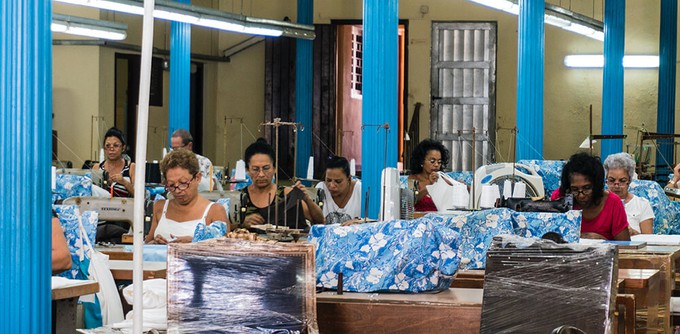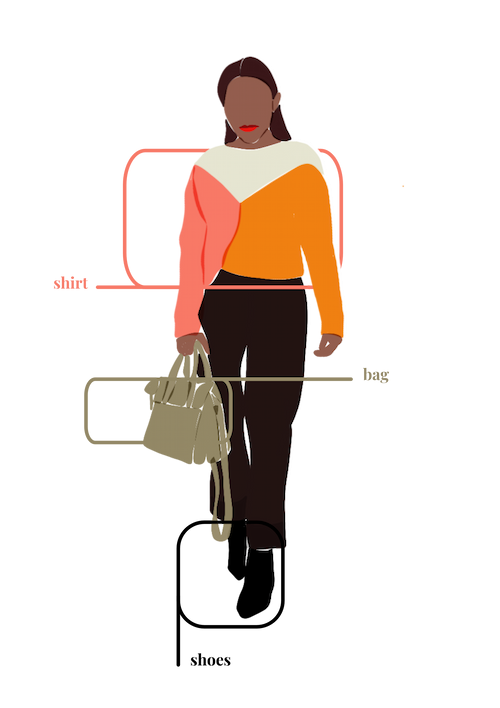- Clothes
- Bags
- Accessories
-
Inspiration
- Shoes
Problems with Fast Fashion: Cheap Clothes, High Hidden Costs

A £5 dress? Sounds great at first, but sadly, there’s a HIGH cost behind fast fashion’s low price tags.
Those brands don’t tell you about it, though. But since you’re here, we bet you’ve started to suspect that something fishy might be going on (and you’re right).
So, let’s look at the problem with fast fashion: why it’s bad, why you can’t stop buying it, and how to make better choices for the planet, garment workers, and yourself.
What is fast fashion exactly?
Fast fashion means clothes and accessories churned out as cheaply and quickly as possible to follow celebrity and catwalk trends.
They’re mass-produced, sold for ridiculously low prices, and designed and marketed as being disposable (so that you get rid of them after only wearing them a handful of times and buy new ones regularly).
But why exactly is fast fashion bad?
What are the problems with fast fashion?
The problems with fast fashion range from environmental issues to social concerns and… an entire business model that’s completely unsustainable.
If you’re starting to wonder “how can fast fashion brands sell clothes for such low price tags,” the answer is… because it’s the planet and garment workers paying the real price.
The environmental problems with fast fashion

One of the main ways in which this industry gets clothes out so fast, in huge quantities, and for the lowest price tags? By IGNORING the impact this has on the planet.
- Excessive water usage – To give you an idea, we’re talking about 2,700 litres of water to make a single cotton t-shirt. And while 785 million people haven’t got basic access to drinking water? Fast fashion is fuelling desertification and making an already scarce resource even less available
- Pesticides and toxic chemicals – Fast fashion uses dangerous chemicals and toxic dyes to speed up the process and cut costs. For example, it prioritises cotton, which needs 6% of the world’s pesticides and 16% of all insecticides
- Water pollution – Around 90% of fashion wastewater is dropped into rivers (mainly in developing countries)... untreated. Full of substances like mercury and arsenic, it’s harmful to both animals and humans
- Polluting fabrics – Another fast fashion problem is its use of the worst fabrics for the environment, like cotton and polyester. The latter has an extremely polluting production process (40% of all fashion’s carbon emissions), sheds microplastics that end up in the ocean, and takes centuries to decompose
- Overproduction and waste – More negative effects of fast fashion: around 100 billion new garments are made every year. But when people are encouraged to keep discarding them to buy new ones? We end up with 92m tonnes of waste (the equivalent of one truck full of clothes being dumped into landfills every second). Oh, and fast fashion is getting even faster due to the rise of ultra fast fashion giants like SHEIN and Boohoo
- Climate change – Fast fashion contributes to climate change in different ways (like desertification) but especially due to its carbon emissions. This industry is responsible for 10% of all greenhouse gasses—and it’ll become 26% by 2050 if things don’t change
Social and ethical fast fashion problems

Another big fast fashion problem is its human cost.
- Sweatshops – To keep prices so low, fast fashion brands (even big household names) rely on dodgy supply chains and factories where garment workers are paid peanuts
- Modern slavery conditions – Garment workers are usually forced to accept inhuman shifts and unsafe, unregulated environments. Plus, women are often harassed and abused, which is why we believe fast fashion is a feminist issue
- Child labour – Yes, that’s still a thing in fast fashion, especially in cotton production
- And it’s not getting better – In 2013, the Rana Plaza manufacturing complex in Bangladesh collapsed, killing thousands of fast fashion workers. It should have been an eye-opener for this industry… and yet, even in 2023, garment workers are still protesting and getting killed for it
The problem with how fast fashion affects consumers like you

Do you often tell yourself you don’t need that new garment but can’t help purchasing it anyway?
It’s not your fault: buying fast fashion clothes has literally affected your brain!
- Seeing clothes as disposable – In the past, clothes were made to last, and they’d even get passed down to siblings and new generations. Now? They’re designed to fall apart, and people only wear them 7 times… or less
- Keeping you trapped in a vicious cycle – Fast fashion has brainwashed you into thinking you shouldn’t be seen with the same outfit twice. Or that you need to buy new clothes to feel happy or worthy. Not fair, is it? These brands often play on people’s insecurities—especially on social media—and it can have a negative impact on your mental health
So, what’s the main problem with fast fashion?
The main problem with fast fashion is actually… its entire business model!
Since it’s based on overconsumption and relies on dodgy practices (like sweatshops and polluting materials) to keep prices so low?
The problem with fast fashion is that it’s completely unethical and unsustainable.
An alternative to the problems of the fast fashion industry: a slower, more sustainable approach

Now that you understand the problem with fast fashion, are you ready to make a difference?
- Stay informed – Well, you’ve just read this article. So, you’re already a step ahead! If you want, you can also look into some fast fashion documentaries, podcasts, and books
- Know what to look for – Choose the most sustainable fabrics and check if a brand is actually transparent about their supply chain (many fast fashion brands use greenwashing to make you believe you’re buying ethical clothes!)
- Embrace this mindset shift – Go from seeing clothes as throwaway items to falling in love with them. Instead of following everchanging trends, find your own signature style, remix your clothes to create different outfits, and don’t be afraid to repeat them
- Buy clothes more mindfully – Stick to fewer clothes that you actually adore and were made to last, ethically. Sustainable clothes tend to cost a bit more (well, now you know why fast fashion is so cheap), but when you buy less and keep them for years? Your cost per wear will be much lower!
Supporting ethical fashion companies doesn’t have to be hard! At Project Cece, we brought hundreds of fair trade brands in one place and added filters to narrow down your choices.
There are so many problems with fast fashion, but YOU can be part of the change. When this industry wants you to keep buying (and binning) new garments without asking how and by whom they were made?
Choosing to be happy with less and buy your clothes more mindfully from now on… well, it’s a revolutionary act!
Found this helpful? Start receiving our tips and inspiration to make even more sustainable fashion choices.
Share our story
Related articles
Fast Fashion's Environmental Impact: Your Clothes' Real Cost
Low price tags, HIGH cost for the planet. Here’s a jargon-free overview of fast fashion’s environmental impact—and what YOU can do about it.
The Devil Wears… Ultra Fast Fashion. Do You?
Sweatshops, environmental damage, and a negative effect on young consumers’ mental health: meet ultra fast fashion and its sinful consequences.
How to Ditch Fast Fashion & Switch to Ethical Clothes: 10 Tips
Ready to take the first step towards a more sustainable wardrobe? Here are some practical tips to ditch fast fashion and discover ethical alternatives.
Project Cece is a platform that collects ethical fashion from vetted brands and shops in one place. Browse ethical fashion for women and men and find items that fit your style, budget and values!



